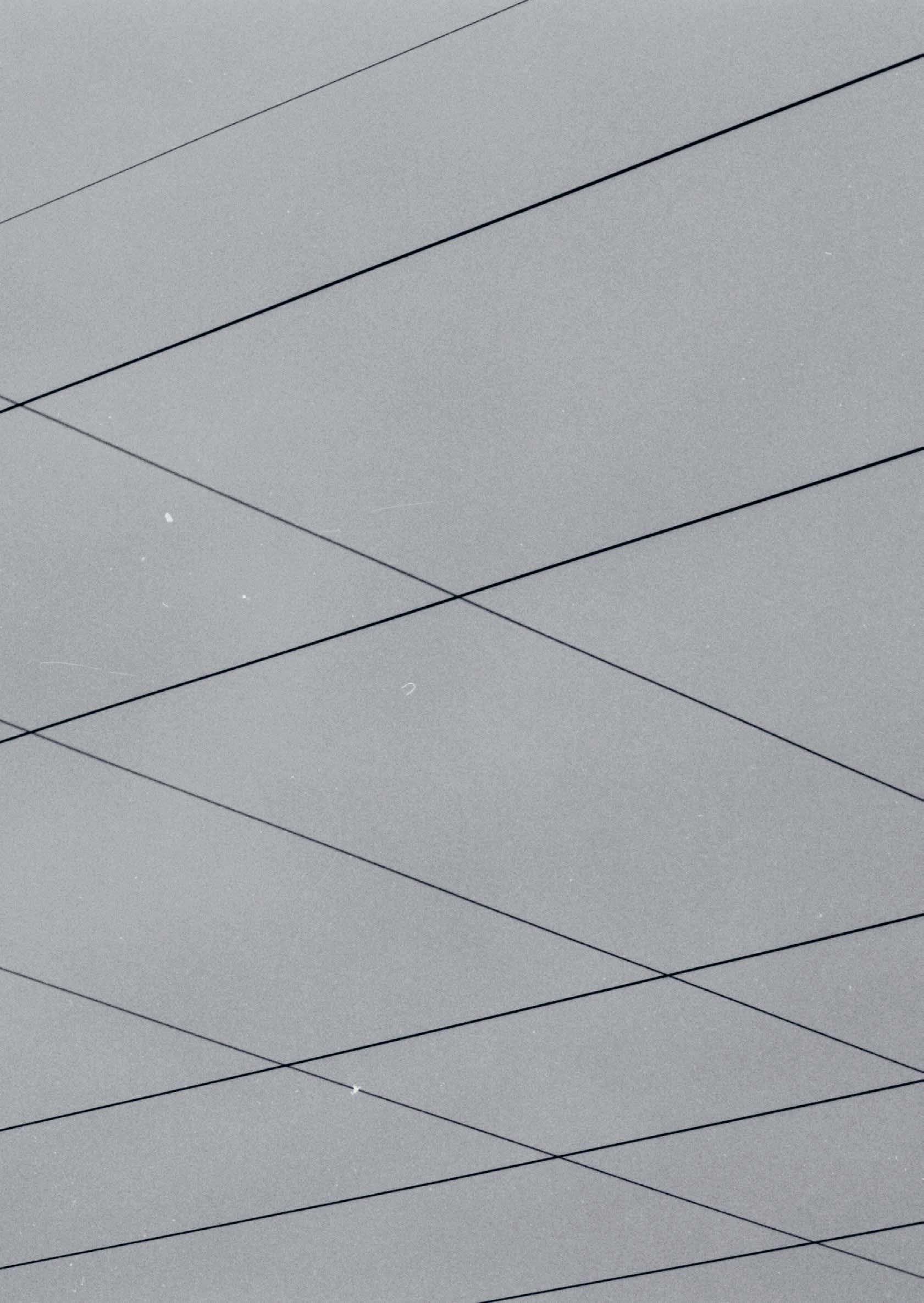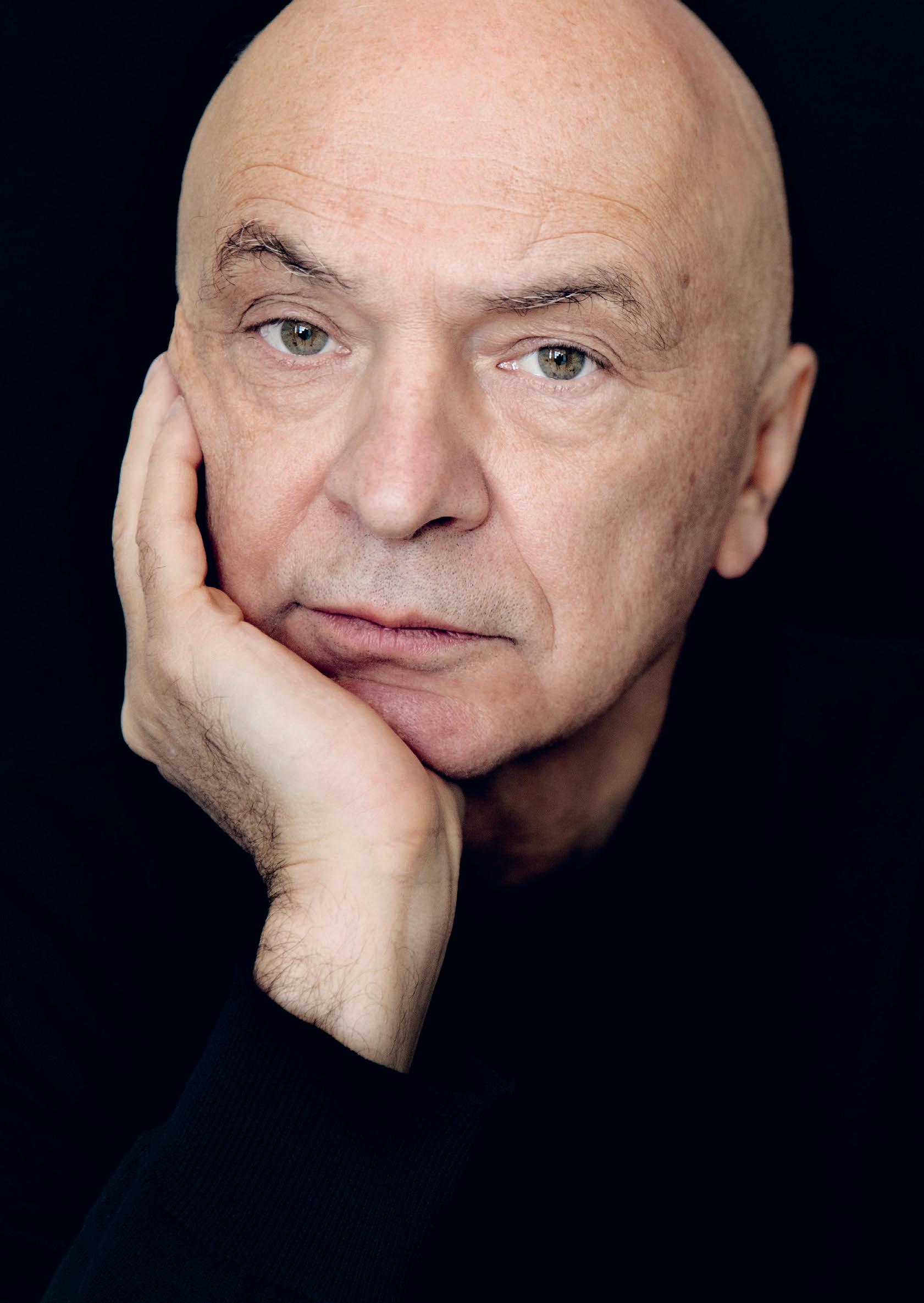BERNHARD LANG

5 — Preface


5 — Preface
6 — Composer Portrait
10 — Opera/“Musiktheater” Overview
Der Reigen Der Hetzer
18 — Series Cheap Opera Differenz/Wiederholung Game Monadologie Hermetika
30 — Imprint & The Author

Bernhard Lang is undoubtedly one of the most internationally significant, frequently performed and productive contemporary composers. He has written hundreds of works for the most diverse performing forces, while spanning every genre. The present brochure provides an overview of Lang’s whole compositional development, his distinctive composing style and series of works, as well as their philosophical foundations and basic political standpoints.
Detailed information on individual pieces, visual and audio material, perusal scores and the composer’s complete work catalogue can all be found online. From Bernhard Lang’s extensive “Musiktheater” output, we have focused on two works representing operas with larger and smaller forces.
We hope you enjoy reading our brochure! Your Ricordi Berlin Team
Bernhard Lang (b. 1957 in Linz, Austria) is among the most fascinating composers of his generation. Shortly after completing his postgraduate studies in German language and philosophy, he began to write a doctoral dissertation on the language philosophy of Ludwig Wittgenstein. However, he would swiftly abandon this project in order to pursue a career as a jazz musician. After studying music, jazz, and composition with mentors such as Georg Friedrich Haas and Gösta Neuwirth, Lang spent most of the 1980s and early 1990s touring across Europe as a successful pianist, arranger, and improviser with several experimental jazz-rock bands. For more than a decade, his interest in philosophy faded into the background. It was not until the mid-1990s, when Lang came across the writings of the French philosopher Gilles Deleuze, that he would connect his interests in jazz improvisation, composition, and philosophy, and start putting notes to paper.
Stylistically, Lang’s œuvre is unruly and constantly draws in new associations. On the one hand, his work is deeply rooted in the European tradition of modernism. His compositional language portrays a thorough knowledge of the complex virtuosity of György Ligeti, the absurdist humour of Mauricio Kagel, and the mathematical algorithms of Iannis Xenakis.
On the other hand, the composer’s background in jazz and free improvisation is also palpable. The aesthetic freedom that his music radiates connects to that of American composers such as John Cage and John Zorn. At the same time, Lang’s œuvre also reveals his past involvement in jazz-rock bands. Popular music idioms, such as samplers, synthesizers, drums, and electronica are especially frequent touchstones. Although Lang’s œuvre evades easy stylistic categorization, the key concept that binds all of his works together is disarmingly simple: it is that of the loop or the never-ending repeat. Lang’s central motto? If everything has already been said, just repeat it!
Lang’s fascination with repetition is mainly influenced by his reading of Deleuze’s seminal philosophical work Différence et répétition (1968) and manifests in many different ways. On a surface level, Lang’s inclination to repeat is reflected in his tendency to group his musical output into largescale compositional series. To date, multiple ongoing series are featured on his work list. Musically, one of the main characteristics of Lang’s compositional language is the obsessive looping of musical motifs. Unlike the repeated cells of American-style minimalism, however, these loops are highly dissonant and rhythmically complex. The works contained in the Differenz/Wiederholung series explore the many ways in which mechanical repetition plays the listening mind and inevitably dissolves into the perception of difference.
The composer is also fond of repeating pre-existing materials. For instance, the idea of rewriting or reinterpreting the musical canon is central to the works in his Monadologie series. In the Cheap Opera series, Lang also repeats political texts. In both of these series, the act of repeating serves
as a tool for socio-political criticism. For to repeat is to think twice, or at least more deeply about any given statement, action or idea. It works as a magnifying glass, making us look more closely at what is actually going on.
Lang’s fascination with repetition ventures far beyond the purely acoustical. His “Musiktheater” works, for example, explore themes of habits and addiction, memory and the loss thereof, or the ominous figure of the doppelgänger. On those occasions when Lang collaborates with scenographers or choreographers, repetition becomes an explicit visual concern. In the Game series, Lang explores the repetitive nature of games, whereas in the Hermetika series, the repetition of words points towards the inherent slipperiness of language. Today, his idiosyncratic musical language and his explicit emphasis on the creative power of repetition has proven to be highly influential on a younger generation of composers. Even though Lang’s work list is already vast, his creative hunger is unsatiable. While new works are continuously being added to the already existing series, Lang’s artistic signature is ultimately one of a never-ending rethinking and re-focusing. This continuously leads the composer down new routes for exploration and proves that repetition is not the antithesis of, but the birthplace of innovation.


Opera/“Musiktheater” forms a major focal point in Lang’s œuvre. The composer started writing for the operatic stage in the early 2000s in an effort to translate his repetition aesthetic from the merely sonic domain into the visual. In 2002, he finished his first “Musiktheater” Das Theater der Wiederholungen. An immediate tour de force, this three-act documentary theatre about the dangers of historical recurrence is set to texts by Marquis de Sade, William S. Burroughs, and transcripts from the Nuremberg trials.
In keeping with the composer’s signature aesthetic, the opera/“Musiktheater” works contain a multitude of repeating musical cells, musical borrowings, and textual citations. In typical Langian fashion, they are often humorous and explicitly political in nature. Additionally, they also explore topics of repetition in terms of their storyline. In other words, Lang’s “Musiktheater” works are radically multi-modal. Here, the power of repetition moves beyond the purely sonic and becomes palpable in every sensory register, shaping the works’ sound worlds, narratives, scenic actions, stage designs, and everything in-between.
In I Hate Mozart (2006), for example, the audience takes a peek behind the scenes of an opera house where its staff is in the middle of rehearsing (and, therefore, repeating) a new Mozart production. As we witness how the performers struggle with and eventually crumble under the immense pressure of Mozart’s artistic legacy, this work explicitly critiques the tendency of modern-day music institutions to endlessly repeat the ‘masterworks’ of canonic composers like Mozart, Bach, and Beethoven. A similar criticism towards the music industries is at work in ParZeFool (2015–16), which is essentially a modern reading of Wagner’s Parsifal (1882), and The End of Creation (2020), in which Haydn’s 1797 oratorio Die Schöpfung is read against a very pessimistic view of contemporary society. Other works approach repetition in a more conceptual manner. Der Golem (2014–16), for instance, explores the literary motif of the doppelgänger and poses some serious questions around the notion of personal identity. In Hiob (2017–18), based on the novel by Joseph Roth, Lang reinterprets the biblical story of Job. Here, repetition takes the shape of habituation, routine, and even insurmountable Sisyphean torture, as we see how the protagonist repeatedly struggles through various personal as well as professional setbacks.
Although this segment of Lang’s œuvre is already vast, more works are constantly sprouting from the composer’s imagination, signalling a true affinity with the dramatic genre. The current catalogue ranges from intimate chamber operas (such as Der Reigen, 2012) to large-scale grand operas (such as Der Hetzer, 2019) and is consistently characterized by Lang’s impeccably idiomatic parts for musicians and vocalists alike. Without the need for specialized ensembles, performance opportunities are thus vast.
Libretto by Michael Sturminger after Arthur Schnitzler
Das Hausmädchen (Marie) Soprano
Das Schulmädchen (Lilly) Soprano
Die Prostituierte (Manuela)
Mezzo soprano
Die junge Frau (Emma)
Mezzo soprano
Der junge Mann (Alfred) Counter tenor
Die Schauspielerin (Pauline) Counter tenor
Der Polizist (Franz) Tenor
Der Autor (Robert) Tenor
Der Ehemann (Karl) Baritone
Der Privatier (Johannes) Baritone
Each voice type (fach) may carry both assigned roles, or each role may be cast separately.
INSTRUMENTATION
1.1.1.1.sax – 1.1.1.0 – 2synth –perc.drumset – bgit – 6.0.3.2.1
DURATION
90 minutes
WORLD PREMIERE
25.04.2014, Schwetzinger Festspiele
When the Austrian playwright Arthur Schnitzler finished writing his sexually provocative comedy Der Reigen in 1897, he described it as “completely unprintable”. After being banned from publication in 1903 for being deemed as “erotic literature” that “threatened traditional family values”, Der Reigen was not publicly performed until 1920. The premiere was immediately shut down by police after riots had broken out, which resulted in the play’s full cast and crew facing trial on charges of public obscenity. In the highly comedic music-theatre Der Reigen (2014), Lang and librettist Michael Sturminger transport Der Reigen from its original setting in late nineteenth-century Vienna into the present day. In a cycle of ten short dialogues, Der Reigen shows equally as many sexual encounters between people from across all layers of society. With every new scene, one character remains the same while a new one is introduced. A humorous play on the idea of social interconnectedness, as viewed from one of the most private spaces of humankind: the bedroom. Ten characters. Equally as many love affairs. In ten short scenes, all played by just two actors, Der Reigen is brimming with sex, scandal, and secrecy while at the same time scrutinizing more serious topics such as sexual morality and social ideology. From sex workers, household helpers, and soldiers to poets, priests, and noblemen: Der Reigen shows that love, lust, and lies know no boundaries.


Libretto by Bernhard Lang after William Shakespeare and Arrigo Boito
Joe Coltello (Otello) Baritone
Jack Natas (Jago) Counter tenor
Desirée (Desdemona) Soprano
Mark Kessler (Cassio)
Tenor
Rodriguez Bass baritone
Erich Berger (Montano) Bass
Emily (Emilia)
Mezzo soprano
Choir
INSTRUMENTATION
3.3.4.3 – 4.2.3.1 –timp.3perc.glsp.xyl.vib.mar.drumset –bgit.hp.synth – 12.10.8.6.5
DURATION
90 minutes
WORLD PREMIERE
26.09.2021, Oper Dortmund
Jealousy, slander, and murder. These three timeless themes are the central focus in William Shakespeare’s tragedy Othello (1603). Almost three centuries later, in 1887, the Italian composer Giuseppe Verdi would use Shakespeare’s text as the starting point for a four-act opera, likewise to be titled Otello. Today, and again more than a century later, Lang repeats this cycle by re-writing Verdi’s masterpiece. In Der Hetzer (2019), Verdi’s late-romantic opera becomes a forceful, jazz-infused political commentary on pressing current issues such as migration and ethnic bias. In the intervals between the four acts, the composer invites young, local talent to the stage and asks hip-hop artists, rappers, and DJs to comment on their own experiences with the opera’s central themes. The message could not be more clear: while a lot has changed since the seventeenth century, the fear of the faceless ‘other’ has intensified and is perhaps more polarising and dangerous than ever.
‘Joe Coltello is different. He is not from around here. He looks different from us. Perhaps he even speaks with a slight accent. Surely, he cannot be trusted...’ What ensues is a story as old as time: Coltello is othered, harassed, slandered even. Jealousy and tacit racism turn into bullying and eventually spiral into murder. A modern-day reinterpretation of Shakespeare’s Othello, Der Hetzer exposes the many dangers of right-wing extremism.



Lang’s newest project, the Cheap Opera series, is a musical take on documentary filmmaking. These works feature extensive textual quotations from non-fictional sources, such as autobiographical documents, newspaper articles, and government reports. In these works, the composer tackles current socio-political debates head on. Migration, the surge of populism, or invisible diseases – no subject is too sensitive for Lang when the mission is to raise awareness. A deep-felt urge towards an increased socio-political engagement is what forms the starting point for these works. Among them are some of the composer’s most explicitly political pieces to date.
Despite their title, the works contained in the Cheap Opera series are unlike anything one would conventionally expect from an ‘opera’. While these works can be staged, they require only limited resources. Here, there are no elaborate costume changes, no enormous sets, no mass choreographies. Instead, these works are written for small ensembles. They feature only a limited number of performers, usually multi-instrumentalists, and often rely on artificial voices and synthetic sounds, thus intentionally making the overall sound world appear ‘cheap’. With production costs, staff numbers, and rehearsal times purposefully reduced to a bare minimum, these works underline the oftentimes severe creative and financial constraints within the creative industries. The Cheap Opera is therefore a radically democratic series: it is music stripped from its elitist connotations.
The Differenz/Wiederholung series has been an ongoing project since 1998. Initially, it marked a major turning point in Lang’s compositional language. Trained largely in the tradition of Austro-German modernism, Lang had avoided repetition for most of his career. Starting with this series, however, repetition came to be the central focus of his aesthetic. Today, Differenz/Wiederholung contains over forty compositions, and new works are added on a regular basis. While all of them differ drastically in instrumentation, scale, and atmosphere, an explicit engagement with exact musical repetition and the limits thereof is what binds these works together.
The cycle takes its title from the philosophical treatise Différence et répétition (1968), which was written by the French post-structuralist thinker Gilles Deleuze. In this book, the philosopher claims that repetition is an impossible concept. A repeated object will inevitably exist in a different time, space, and context than the original. In other words: a repeated object will always, in however small a degree, differ from its original. Following that same line of reasoning, Lang’s series radically challenges the listener’s preconceptions about musical repetition.
What does it mean to hear the same musical cell over and over again? Do we hear the exact same thing, reaffirmed continuously? Or does the listening mind wander off, only to start discovering minuscule differences in articulation, dynamics, or timing? And if so, are these microscopic differences intentionally written out by the composer, accidentally caused by the performer, or merely imagined by the habituated mind?
The pieces in the Differenz/Wiederholung series feature brief, layered, and radically complex musical motifs that are incessantly repeated only until they are brusquely abandoned for another repeating cell. Due to their explicit focus on mechanical repetition, these works connect to the worlds of DJ culture and electronic dance music. Often high in tempo and featuring extensive rhythmic, melodic, and harmonic complexity, these works push their performers to the absolute limits of their technical capabilities. From extended techniques to microtonality and from solo études to orchestral works: Differenz/Wiederholung is synonymous to radical extremes and far-reaching virtuosity.


Who does not enjoy playing a game? The days when games were only suitable for children are long gone. Today, games are for everyone, even musicians. Since 2016, Lang has been working on his Game series. The series marks a radical departure from the composer’s prior engagement with post-structuralist philosophy. Instead, the starting point for this cycle of works is game theory: a subfield of mathematics which studies the strategic decision-making among participants in a competitive and strictly rule-based scenario. Nevertheless, the series is unambiguously tied to the rest of Lang’s œuvre due to its extensive focus on repetition. The Game series explores the inherently repetitive nature of games; the meditative and enchanting ritual of the gameplay loop.
The works in this series are written for small ensembles with varying instrumentation. They are so-called “game pieces” in the tradition of composers such as John Zorn and Christian Wolff, in that they are semi-improvisational works with a radically mobile form.
In Lang’s musical games, the musicians are not given a predefined score. Instead, they are presented with a set of strictly defined rules on which they need to base their decisions. Do you play along nicely and respect the rules, or do you sabotage the game? Are you a team player or are you going for the win? The musicians challenge each other in different rounds, in which they are able to act more or less freely within the rules of the game. In each round, one musician is appointed as the scene master: the powerful referee who coordinates – or interferes with? – the decisions of the group. Through this intricate interplay of power structures and the collective obedience and disobedience thereof, the works in the Game series reveal the many hidden social dynamics of musical performance. A reflection on what it truly means to ‘play’ a piece.
More than forty works are currently listed in Lang’s Monadologie project (beginning in 2007). With barely a handful of exceptions, all of these are reinterpretations of pre-existing compositions, or what the composer refers to as “meta-compositions”. From Bach, Mozart, and Beethoven to Chopin, Schoenberg, and Stravinsky: no historical work is off limits for Lang. In this series, the whole of music history is Lang’s playing ground.
With the title of this series, Lang points toward the philosophical concept of the “monad”, which was coined by the German philosopher Gottfried Wilhelm Leibniz. In the early eighteenth century, Leibniz used this term to describe the smallest possible units of being: the fundamentals out of which the universe exists. It was from these “atoms of nature” that Leibniz believed the whole world was built. Similarly, the works in Lang’s Monadologie series are entirely generated from short musical motifs.
More often than not, these motifs represent the very ‘essence’ of the work they refer to. Examples include, for instance, the bassoon solo at the beginning of Stravisnky’s Sacre du printemps or the bombastic opening fanfare to Richard Strauss’ Also sprach Zarathustra. By putting these iconic and highly recognisable fragments on loop, a whole new work arises. At the same time, repeating these canonical ‘masterpieces’ also raises some serious questions about the validity of the Western canon and the overwhelmingly repetitive nature of today’s cultural programming policies.
Many of the works in the Monadologie series are composed with the aid of computer algorithms. This is reflected not just in the extreme rhythmical complexity of the repeated cells, but also in the wildly unexpected directions they often tend to develop in. The result is a collection of extremely virtuoso pieces in which the performers are pushed to explore the boundaries of their technical and physical capabilities.


Pick a word and repeat it, out loud, at least ten times in a row. After a few repeats, you will notice that the word seems to lose all meaning. Instead, you start to focus on its shape, its intonation, and its sounds. Perhaps you notice the resonance of its vowels or the percussive slaps of its consonants. Maybe you even notice the rhythm, the melody of your speaking voice, or the inflection of your mother tongue. Indeed, the sheer act of repeating has entirely depleted this word of its semantic meaning and instead reduced it to a purely sonic event. This phenomenon of semantic slippage – or, as psychologists call it, “semantic satiation” – is a central feature to the works contained in Lang’s Hermetika series (beginning in 2008).
In terms of philosophical inspiration, Hermetika marks a radical departure from the chronologically earlier series Differenz/Wiederholung and Monadologie. Instead of Deleuzian philosophy, the starting point for these works is an assorted collection of so-called “hermetic” texts. In the narrow definition of the term, hermeticism refers to the study of occult philosophy and magic. Some works in this series are set to gnostic or apocryphal texts and explore themes such as female divinity, sexuality, and spirituality. Others abide by a much broader definition of hermeticism: that of a poetic, almost dadaistic writing style which prioritizes the sonic qualities of words over their semantic meaning. A link to the language philosophy of the Austrian-British thinker Ludwig Wittgenstein, and especially his writings on the slipperiness of meaning, forms Hermetika’s tacit undercurrent.
Musically, the series features a collection of slow-paced and largely contemplative works in which the human voice plays a central role. A strong emphasis is placed on the ritualistic qualities of repetition, which here becomes a medium for reflection, meditation, and spiritual invocation.


Published by
G. Ricordi & Co. Bühnen- und Musikverlag GmbH
Part of Universal Music Publishing Classics & Screen Stralauer Allee 1, D-10245 Berlin info.ricordi@umusic.com
+49 (0) 30 52007-1323 www.ricordi.com
facebook.com/ricordi.ump instagram.com/ricordi_ump twitter.com/Casa_Ricordi
Edited by: Daniela Brendel, Jascha Zube
Editorial assistance: Paula Otten
Text (pp. 6-27): Dr. Christine Dysers
Photos: Leon Greiner, Harald Hoffmann (pp. 2, 28)
Visual concept/design: Eps51
Typefaces: Noe, Neue Haas Unica
Print: Druckhaus Sportflieger
Contact Daniela Brendel
Promotion Manager – Stage Works
+49 (0) 30 52007-1328
+49 (0) 173 271 85 31 daniela.brendel@umusic.com
Maximilian v. Aulock
Promotion Manager – Concerts
+49 (0) 30 52007-1329
+49 (0) 172 458 06 42 maximilian.vonaulock@umusic.com
More about Bernhard Lang bernhardlang.at
© Ricordi Berlin, 2023
Dr. Christine Dysers is a postdoctoral researcher at the Uppsala University department of musicology. Her research is broadly concerned with music after 1989, with a particular focus on the aesthetics of repetition, music and the political, musical borrowing, and the notion of the uncanny. Christine holds a PhD in music from City, University of London. In 2021, she was appointed as a Fulbright Visiting Scholar in the department of music at Columbia University. Her book Bernhard Lang: Critical Guides to Contemporary Composers (Intellect, 03/2023) is the first full-length study of the works of Bernhard Lang.
If everything has already been said, just repeat it!